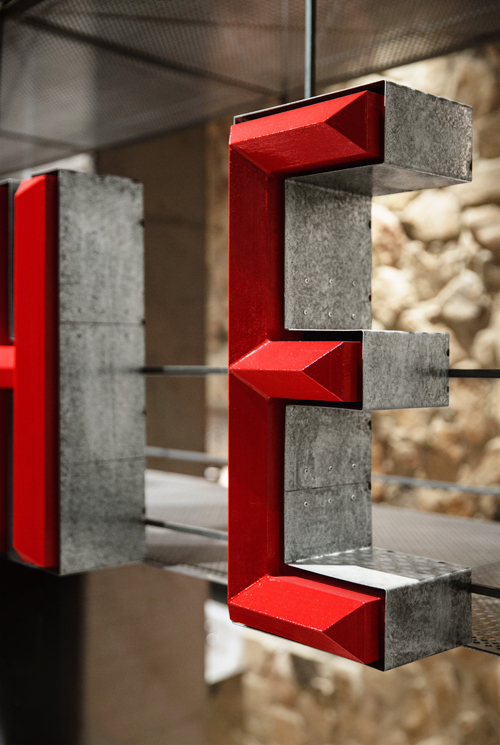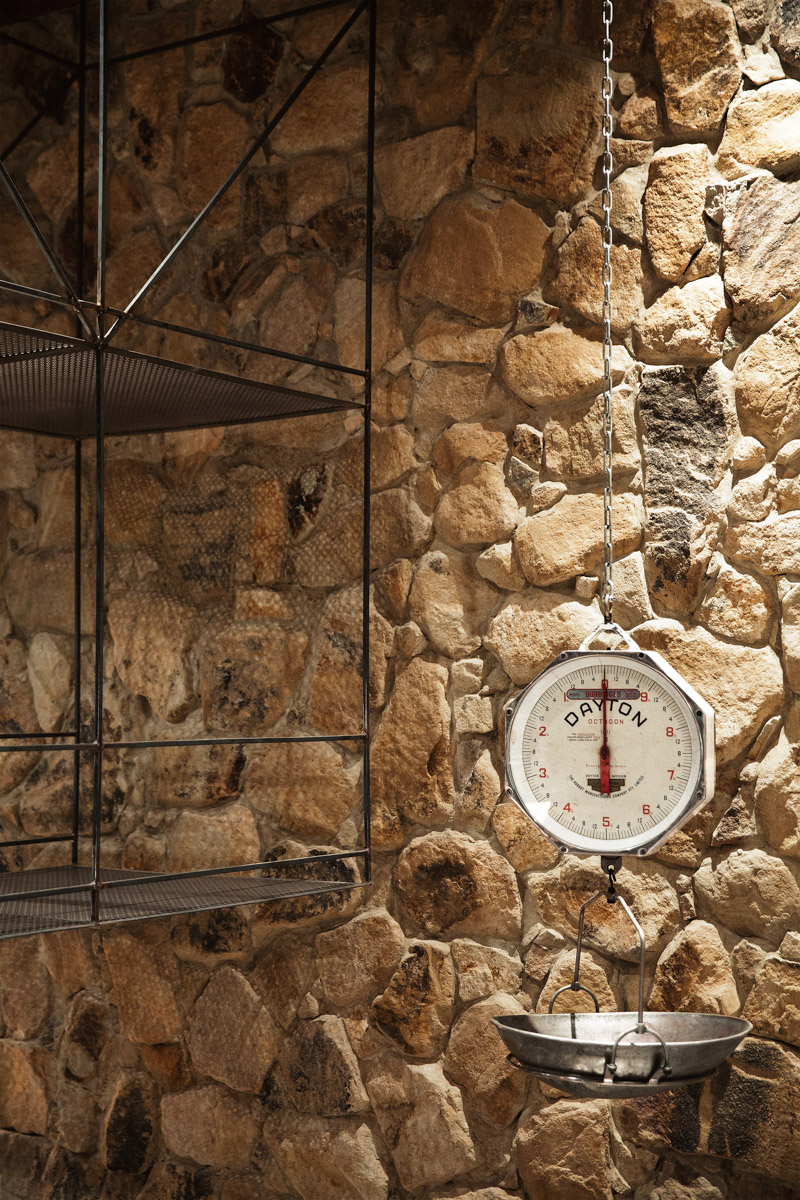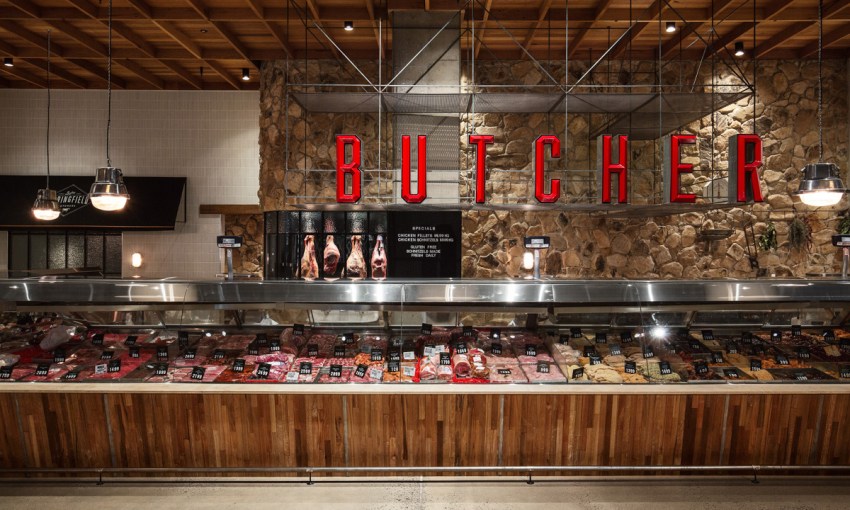Adelaide gets its first boutique butcher thanks to the design firm behind Peel Street’s Clever Little Tailor.
Clever little butcher
People say the devil’s in the detail, but Adam Johnson – director of multi-disciplinary design firm Xtra Shiny – will tell you that’s where he finds god. Actually, he’s an atheist and we’re putting words in his mouth, but Xtra Shiny’s treatment of the Springfield Butcher brand is something close to detail worship.
From the split face sandstone wall made to look, “more like a farmer built it” than a stone mason, through to the hand-cut and polished aluminium sign Adam helped make himself, this butcher shop is a testament to the value design can add to even the most humble of businesses.
“Butchery is a classic, timeless thing that’s been going on since we’ve been hunting animals,” says Adam, recounting his first discussion with client Mike Rankin about the project.
The job of rebranding a retail butcher in the middle of Marion’s retail shopping mall doesn’t look like the dream project for the
high-end firm that gave Adelaide Clever Little Tailor, BNKR and Sushi Planet, but Adam assures us the Springfield Butcher job represents the pinnacle of Xtra Shiny’s portfolio.
“I’ve got a client who trusts me entirely,” says Adam, “any creative person who has the trust of their client does a better job.”
And while the financial investment in the shop build was not small (a meat display fridge costs $150,000), it was the trust between client and designer that really saw the project flourish.

The cow in question: Industry could deal with all elements of the 3D rendered design except the cow, which Adam Johnson cast in molten aluminium himself to be attached to the final product.
“I tend to keep a mental rolodex of things that are relevant to jobs,” says Adam. “If I’m meeting a guy who wants to do a butcher store I’ll access that rolodex.”

3D models were created for every component of the brand with the above letters then being cut from timber by a robotic arm with
millimetre precision
In the Xtra Shiny rolodex (aka computer) are files and files of reference images found on purpose and by coincidence that consist of everything from old car badges and motor oil cans to veteran patches in photos from the post-War period.
While these references helped give the project a theme and direction, Xtra Shiny still had to factor in the day-to-day operation of a butcher store to give it functionality.
“The whole process for me was about problem solving, about avoiding the clinical and cold look of butcher stores, while still ensuring there’s enough tread, non-slip, on the floor,” says Adam.
The resolution between health and safety codes and aesthetic considerations in the final fit out is astounding. A material palette that consists of limestone, sandstone, glass and steel is complemented by reclaimed timber and ceramic tiles hand-made in Japan.
“The sign was an interesting one,” says Adam.
“I asked my signage company if they could achieve what I wanted and there was a lot of umming and ahhing and everyone was just like, ‘that’s too fucking hard.’ And so I contacted a couple of cast metal sign-makers and they quoted me $5,000 or $6,000 and I was like, ‘what’s the point? I can’t sell that to the client.’”
But Adam didn’t give up on his idea of an authentic cast metal sign.
“I joined the dots in my head,” he says when detailing his process of constructing a 3D model for the sign, which could then be used to create a mould.

“Make it look like a farmer built it,” – Adam Johnson’s instructions to diligent stone masons
However, finding a place that could make the mould from his detailed 3D render wasn’t easy. The only company Adam could find to do the job with sufficient precision was a company more engaged with submarine systems and the defence industry than old-fashioned signs.
“That for me was a great point of pride,” says Adam, “using new technologies to give authenticity to a sign that references a craft that’s almost completely disappeared”.
It’s a degree of resourcefulness and innovation that will largely go undetected by the throng of shoppers at Westfield Marion. But it’s the sort of detail that will also make the fritz from Springfield Butcher taste just that extra bit better.

Made-to-order ceramic tiles from Japan and bold industrial lighting salvaged off ships






